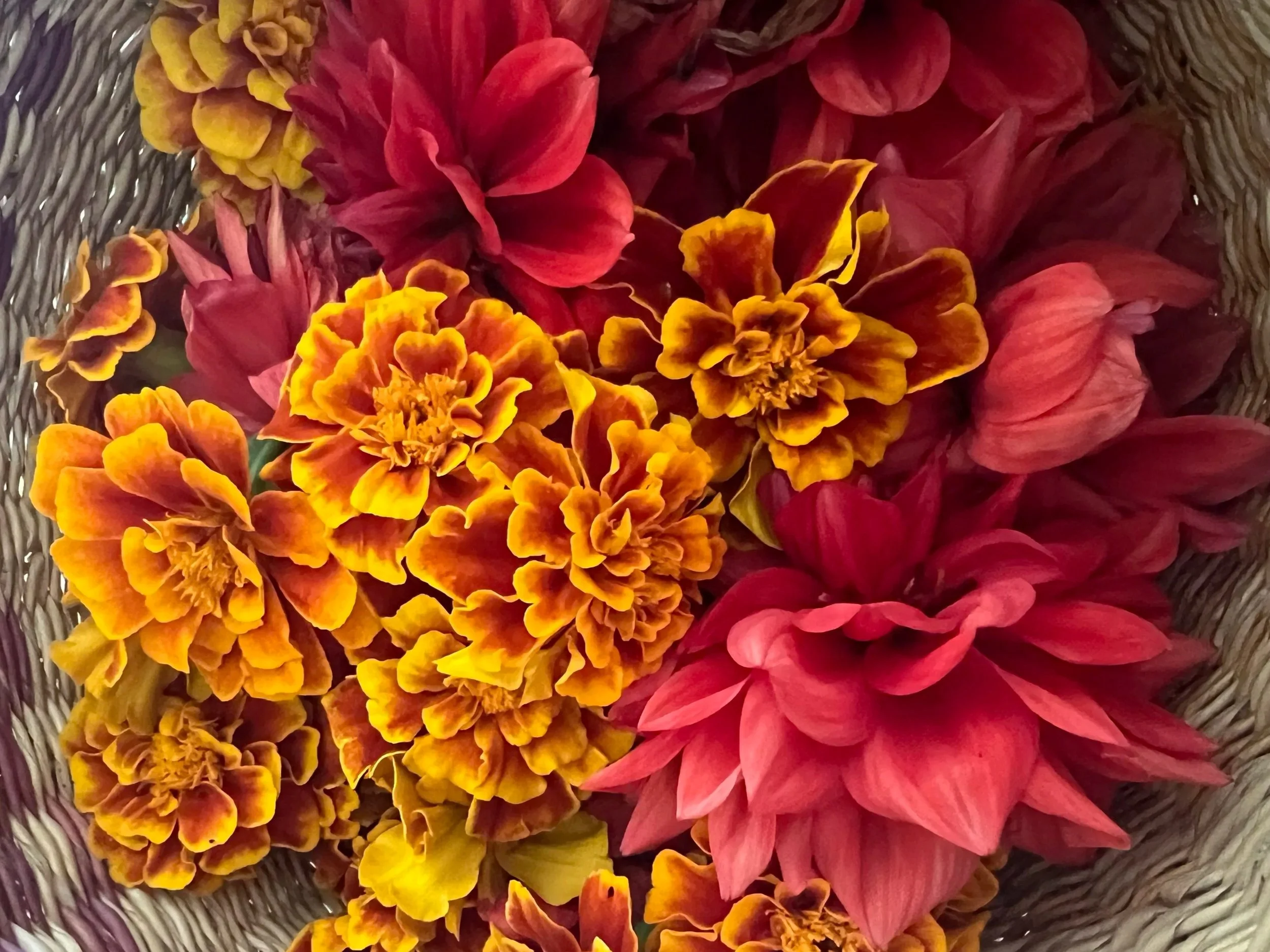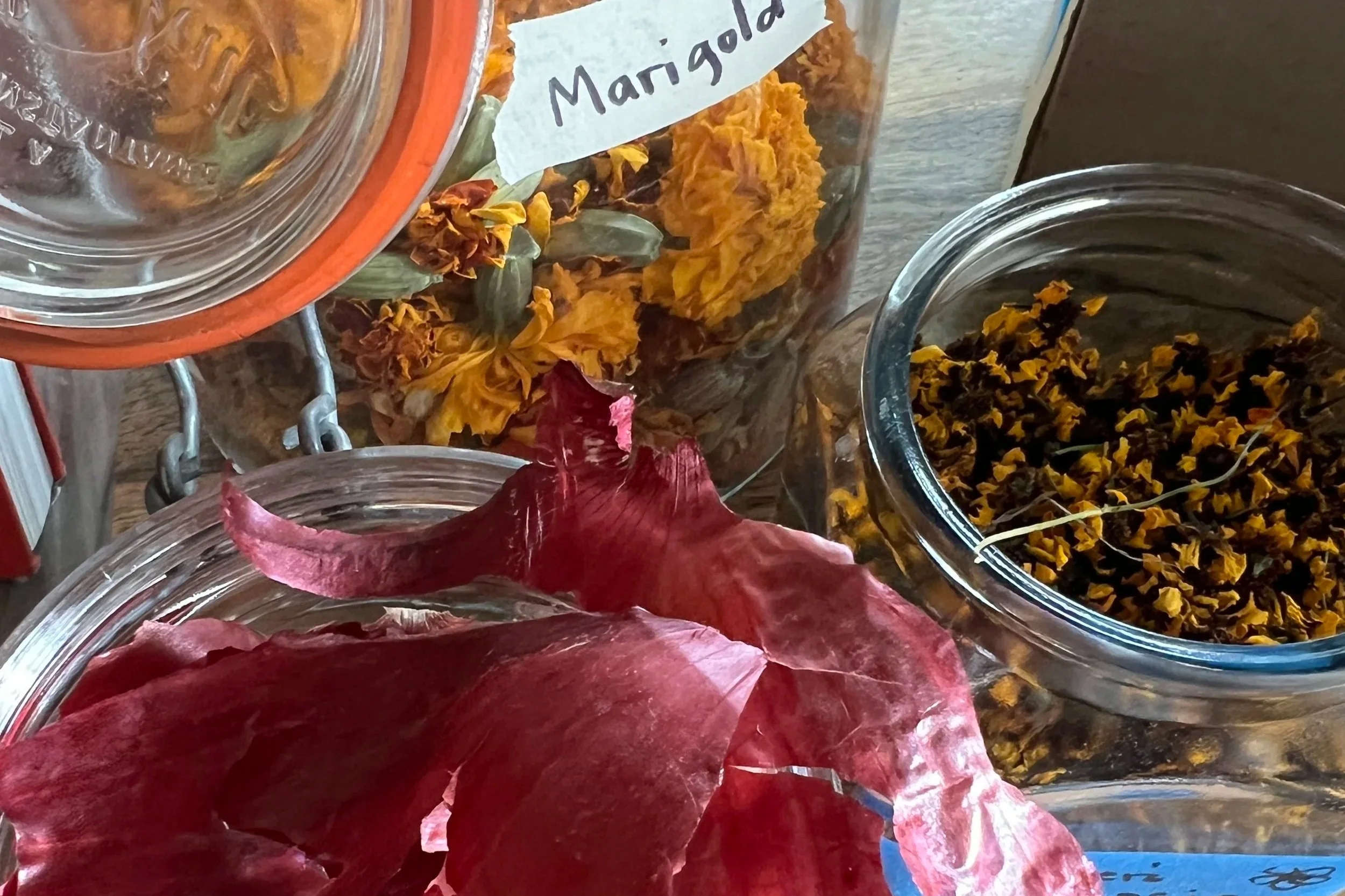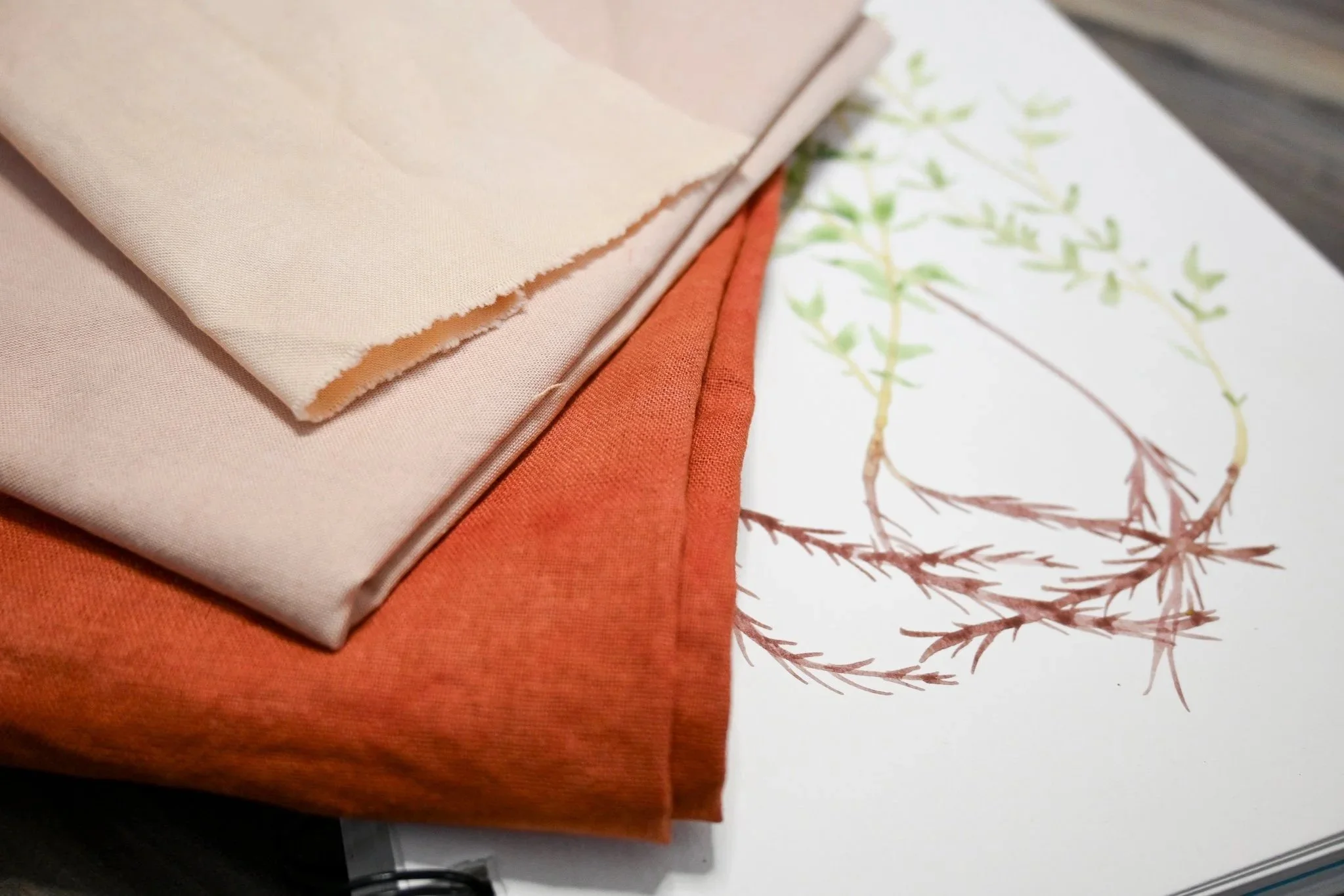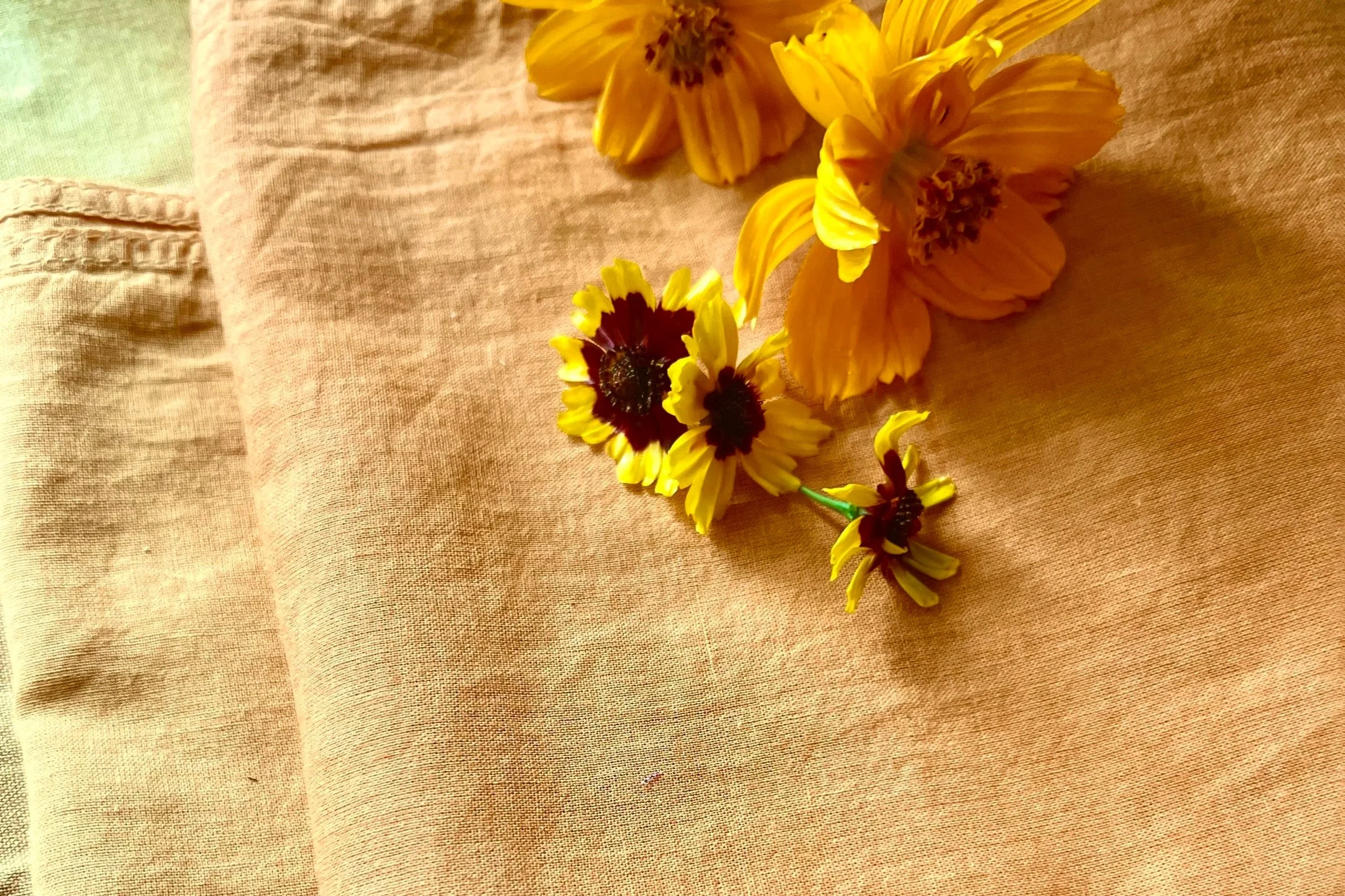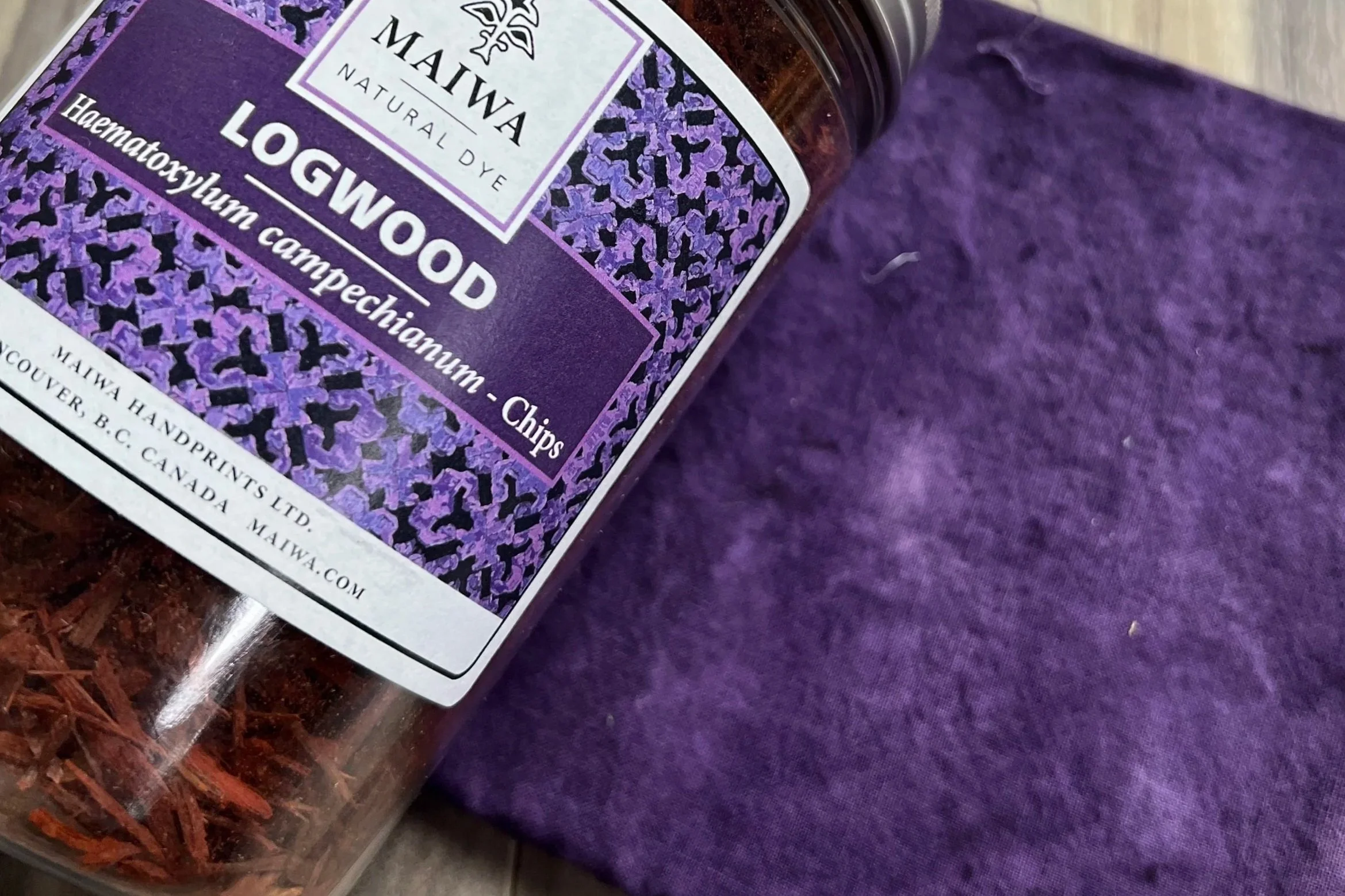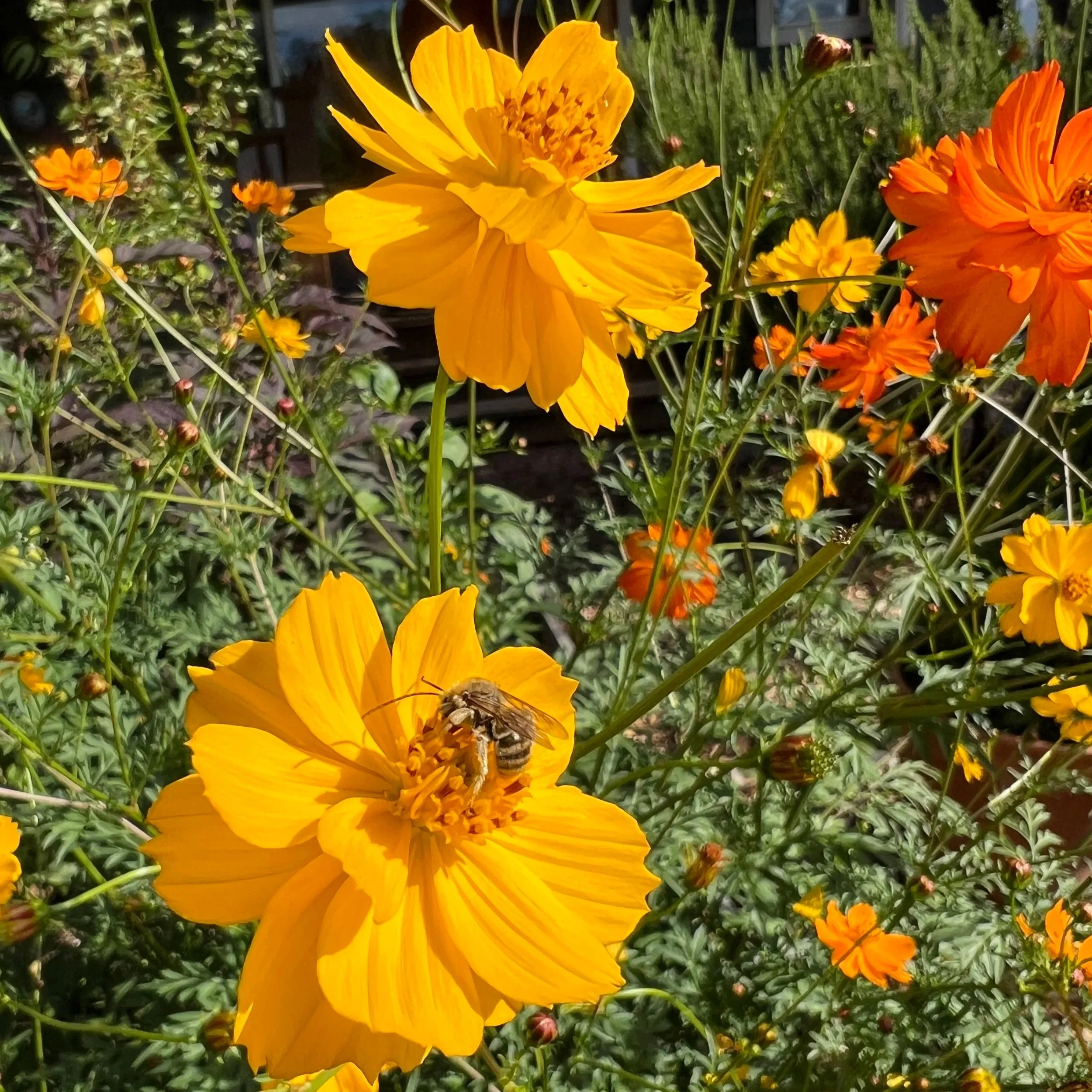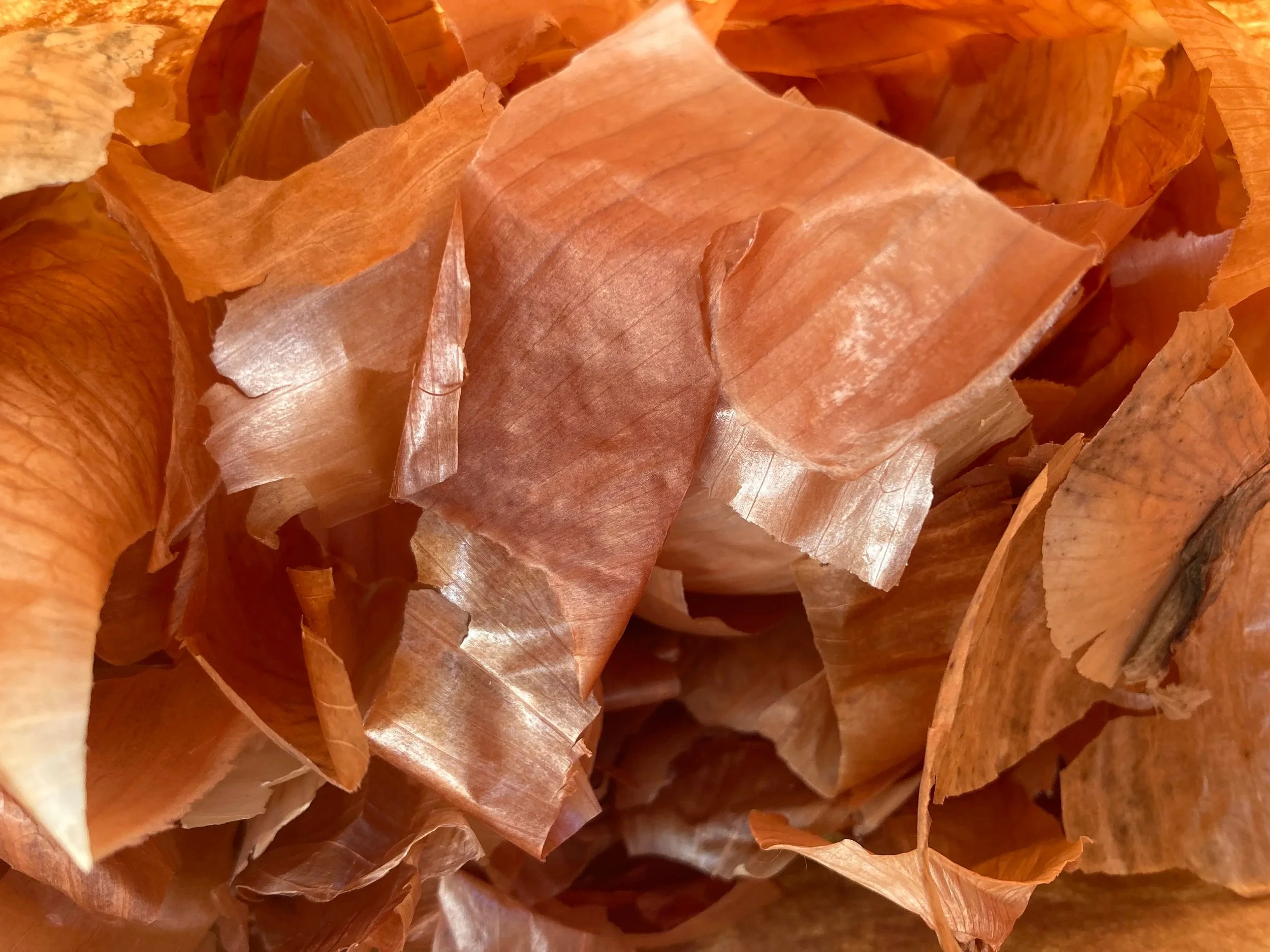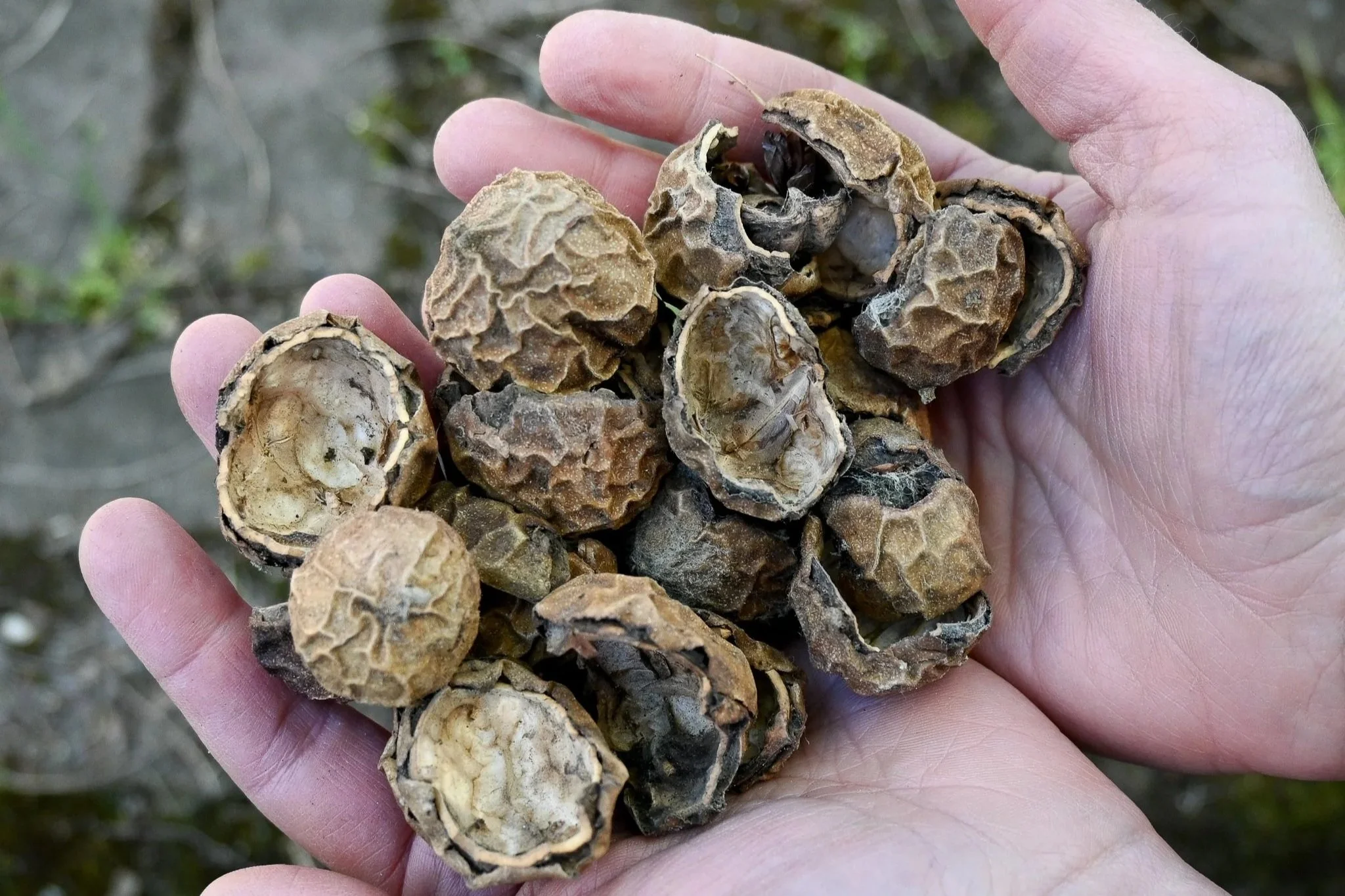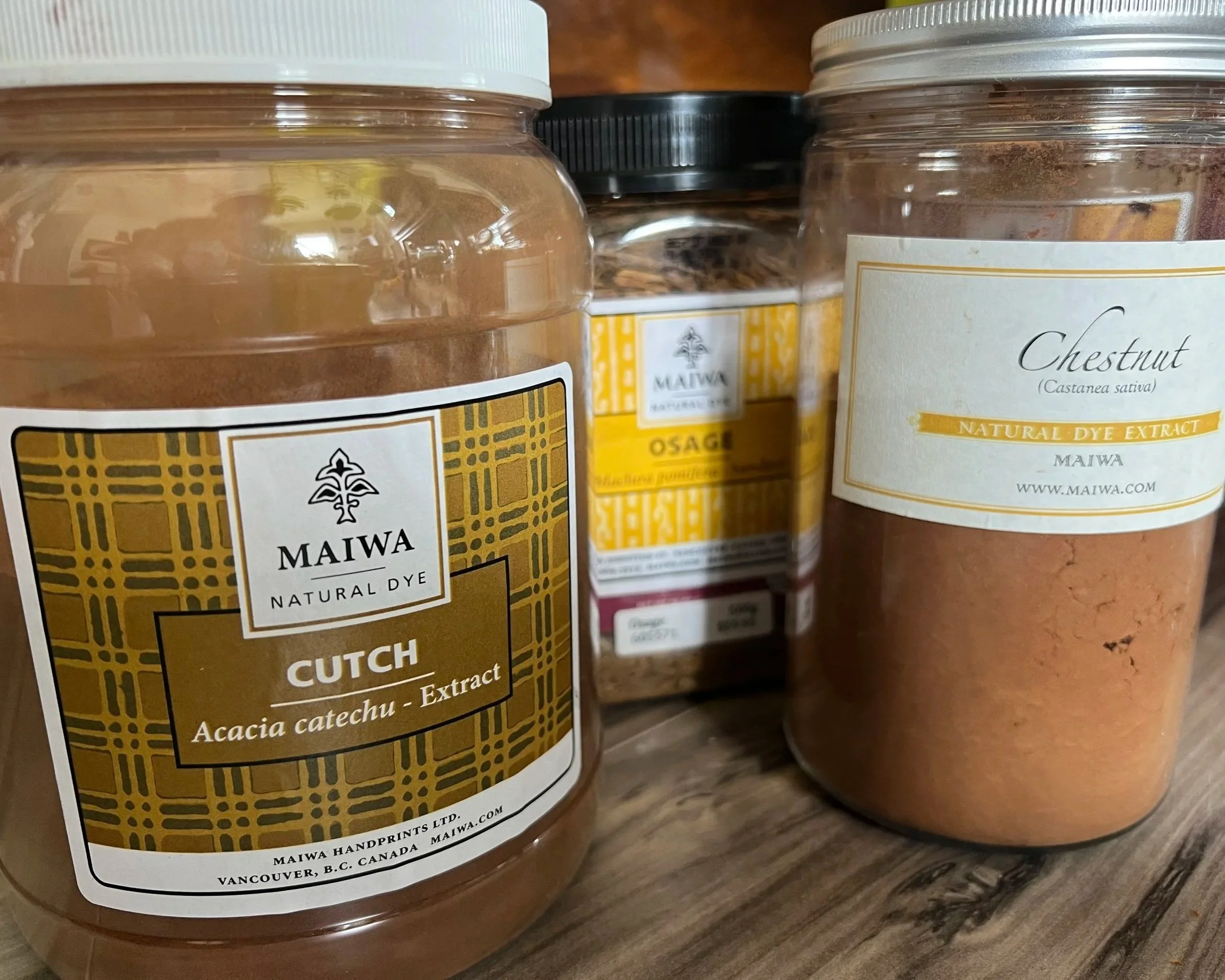All About Dye Stuff
October 1st, 2025
If you have been following along, you should have some fabric that has been scoured and mordanted. In this post we will talk all about dye stuff, which is the term used to talk about the materials you use to dye your fibers.
There are so many wonderful plants that produce colors that can be used to dye. What I am presenting here is not meant to be an exhaustive list, but rather a starting point to introduce you to some of most commonly used plants. These produce rich, vibrant colors on mordanted fabric and are generally considered to have good colorfastness, that is, the colors won’t readily fade or wash away.
Types of Dyestuff
So many plants produce dyes. Depending on the plant, it may be the flower, the leaves, the roots, or the bark that produces color. It might be fun to experiment with what plants in your area produce color!
Whole material: You extract color from whole materials, such as fresh or dried flowers. Whole materials are great because these are things you can grow in your garden or gather from your community! These can be used fresh or dried and stored for later use. Color will first need to be extracted from the dyestuff before immersing the fabric. (More about this in the next post!)
NOTE: To test if a plant in your region produces color, cover it with hot (not boiling) water and let it sit for an hour or so. If you see it release color, there is a good chance it will produce dye!
Ground material: You can generally buy dye material, such as roots or nuts, that has been ground into a powder. The color still needs to be extracted, but the extraction process generally takes less time than with whole materials.
Extracts: Extracts are a way to purchase dye materials that already have the dye extracted from the dye stuff. They are generally very concentrated and only require a small amount to create vivid colors. These can be found in both liquid and powdered form.
Common Dyestuffs by Color
Here is a list of plants that are commonly used for dyeing organized by the color they produce. Most of these are plants that I use and have been shown throughout history to have good colorfastness.
NOTE: While I have listed these by color, know that color results can vary a lot depending on the quality of water used (such as minerals or pH), soil conditions that the plant was grown in, and dye process.
Reds/Pinks
Madder root (scarlet red)
Cutch (terracotta)
Avocado pit (light pink, blush)
Fruit tree bark (pale pink)
Oranges
Dyer’s Coreposis (bright orange)
Cosmos (muted orange)
Onion skins (yellow orange)
Yellows
Marigold (bright yellow)
Weld (bright yellow)
Pomegranate skins (muted yellow)
Beige/Brown
Black walnut (darker beige)
Walnut husks (light beige)
Purples
Logwood (violet)
Lac* (burgandy)
Cochineal* (fuschia)
* These dye materials come from insects.
Other colors:
Blues: The most common source for blues in the natural dye world is indigo. I didn’t include this in the list above, because the process for dyeing with indigo is very different that for other dye sources. Woad is another plant that creates blue, and from what I understand the process for dyeing with woad is similar to indigo. I will be creating a tutorial all about dyeing with indigo in a future post, so stay tuned!
Greens: I have found two ways to achieve greens:
dye a piece of fabric in indigo (blue) and then over-dye it in a yellow dye, such as marigold (blue + yellow = green)
dye a piece of fabric in a yellow dye (such as marigold) and then modify it with iron (ferrous acetate or ferrous sulfate). In my experimenting, this has produced beautiful olive greens. We will cover modifying colors with iron and other elements in a future blog post as well!
You can also experiment with mixing colors, just as you would paints! For example, you could mix a red dye with a yellow dye to make orange or a red with a purple to make a burgandy. It is fun to experiment with different proportions to see what color results you get.The possibilities are endless!
Sourcing Dye Materials
Grow
If you have a little soil and a bit of a green thumb, you can plant your own dye garden! Some flowers I grow include: marigolds, hibiscus, cosmos, dahlias, and weld. The pollinators will appreciate it as well :)
Wild Color by Jenny Dean is a great resource if you are interested in learning more about starting your own dye garden.
Save
Saving kitchen scraps can be the easiest way to start out with natural dyeing. Some great options include pomegranate rinds, avocado pits, and onion skins (red and yellow are both great and produce different colors). Used coffee grounds and black tea leaves are good options as well, though I haven’t personally tested these yet.
NOTE: There are some foods that seem like they work well for dyeing, but are actually not very color fast. These include beets, black beans, and tumeric.
Gather
There are lots of natural elements you can gather form nature. Some items I gather each year include fruit tree prunings, fresh black walnuts, and walnut husks. Just be sure if you are gathering from nature: engage in sustainable harvesting practices and never take more than 25% of what is there.
Purchase
There are several dye materials that do not grow where I live and for these I purchase them ground or as extracts. Here are a few places where I have purchased dye stuff that I can’t access locally:
Botanical Colors (USA)
Dharma Trading Co (USA)
Maiwa (Canada)
Spend some time gathering a couple of different dye sources, whether it be from your kitchen, your garden, or an online natural dye supplier. I’ll meet you in the next post where we will create our immersion dye vat and witness the magic of natural dyeing!
This post contains affiliate links. This means that I may receive a small monetary benefit from purchases made using the link at no additional cost to you.

